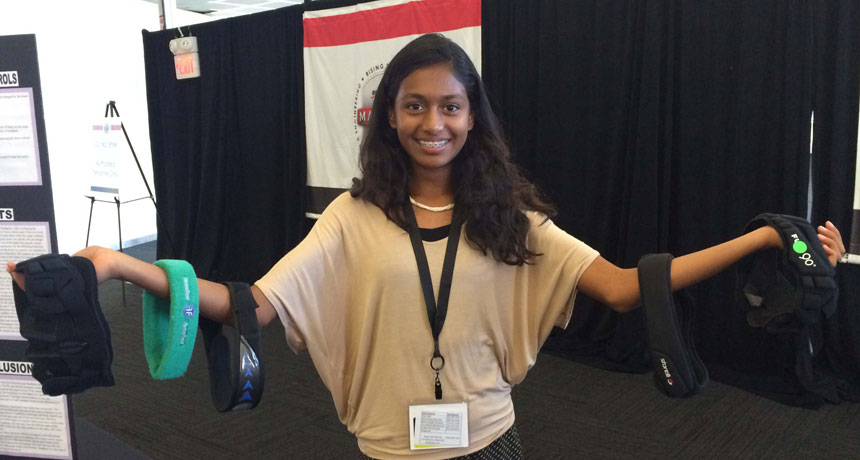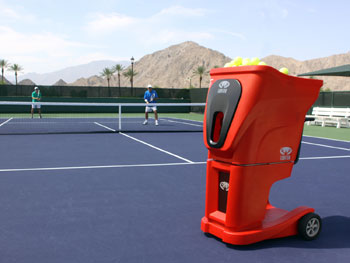Hitting headgear hard to head off concussions
A teen uses her science project to help soccer teammates stay injury-free

Naya Menezes shows off soccer headgear. She hit it hard to see if it could protect players from concussions.
SAN JOSE, Calif.— Sports can be a lot of fun, but some plays can send people and objects crashing in to each other — with painful consequences. When Naya Menezes, 14, saw her fellow soccer players getting head injuries on the field, she wanted to do something about it. So this teen, now a freshman at Scripps Ranch High School, used her science fair project last year to test which types of headgear are most protective.
Strips of head padding helped. Still, her data show, when teens start kicking balls at really high speeds, no design will likely offer full protection.
People who play soccer and other contact sports can suffer concussions — a type of brain injury — due to a blow to the head. Symptoms can include dizziness, headache and loss of memory. Such a trauma can even knock you out for a while. Concussions also can have long-term effects on memory and other brain functions.

Then, Naya tested five different types of headgear on the mannequin. Soccer headgear tends to be simple. It’s usually just a strip of padding encircling a player’s forehead. For a ball coming at 64 kilometers per hour, this protection reduced the force of a hit by about 80 percent, Naya found. But when a ball slammed into her test dummy at higher speeds, the protective effect dropped. “It ranged from 10 to 30 percent,” she reports — “which was not very effective.”
The teen just presented her results at an event known as Broadcom MASTERS (for Math, Applied Science, Technology and Engineering for Rising Stars). This competition brings together students with winning middle-school science-fair projects from across the United States. Finalists shared their work with each other and the public here on October 3. This annual science program was created by Society for Science & the Public. It’s sponsored by Broadcom, a company that builds devices to help computers connect to the Internet.
Headgear blunts the force of low-speed soccer balls — or, at least, the tennis balls Naya used as stand-ins for them. But by the time kids are in middle school or high school, they can kick balls quite hard and fast, she notes. That means they can hit with great force. It appears that the headgear she tested won’t offer much help against such hard strikes.
So for athletes her age and older, manufacturers “need to design better headgear,” Naya concludes. “One way to do that might be to increase the surface area.” Why? The ball doesn’t always hit you directly on the narrow strip of the padding, she says. So, she argues, “If there’s more surface area, there’s a better chance of it hitting the padding.”
Naya wants to test higher ball speeds, and possibly design her own type of protective wear. She also hopes that testing like hers will encourage manufacturers to come up with gear that is more protective. In fact, some are already attempting to do just that.
Follow Eureka! Lab on Twitter
Power Words
(for more about Power Words, click here)
accelerometer An instrument for measuring vibrations or a change in the rate of movement. These sensors typically can measure movement changes in all three dimensions (front-to-back, side-to-side and up-and-down).
concussion Temporary unconsciousness, or headache, dizziness or forgetfulness due to a severe blow to the head.
force Some outside influence that can change the motion of a body, hold bodies close to one another, or produce motion or stress in a stationary body.
Society for Science and the Public (or SSP) A nonprofit organization created in 1921 and based in Washington, D.C. Since its founding, SSP has been not only promoting public engagement in scientific research but also the public understanding of science. It created and continues to run three renowned science competitions: The Intel Science Talent Search (begun in 1942), the Intel International Science and Engineering Fair (initially launched in 1950) and Broadcom MASTERS (created in 2010). SSP also publishes award-winning journalism: in Science News (launched in 1922) and Science News for Students (created in 2003). Those magazines also host a series of blogs (including Eureka! Lab).